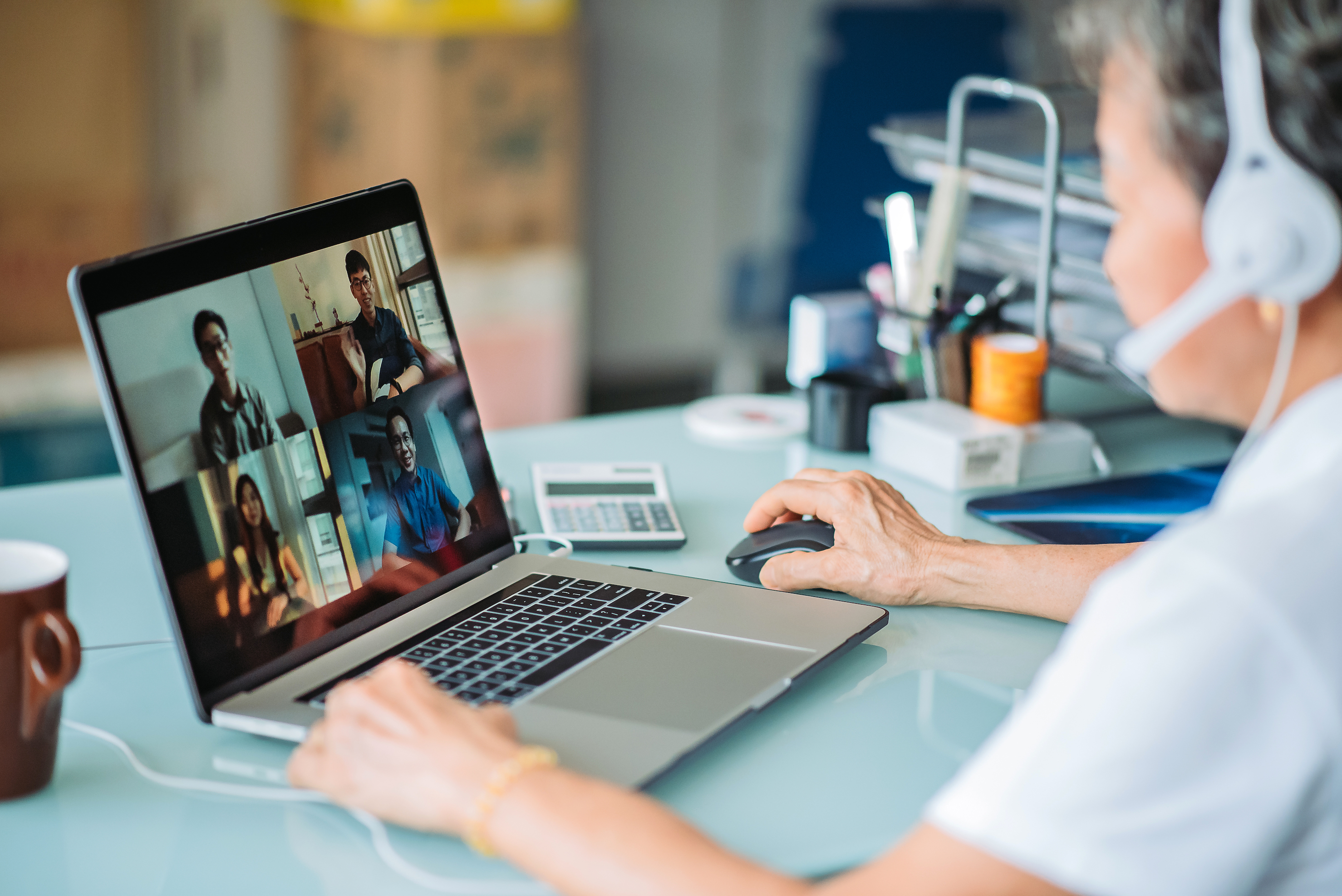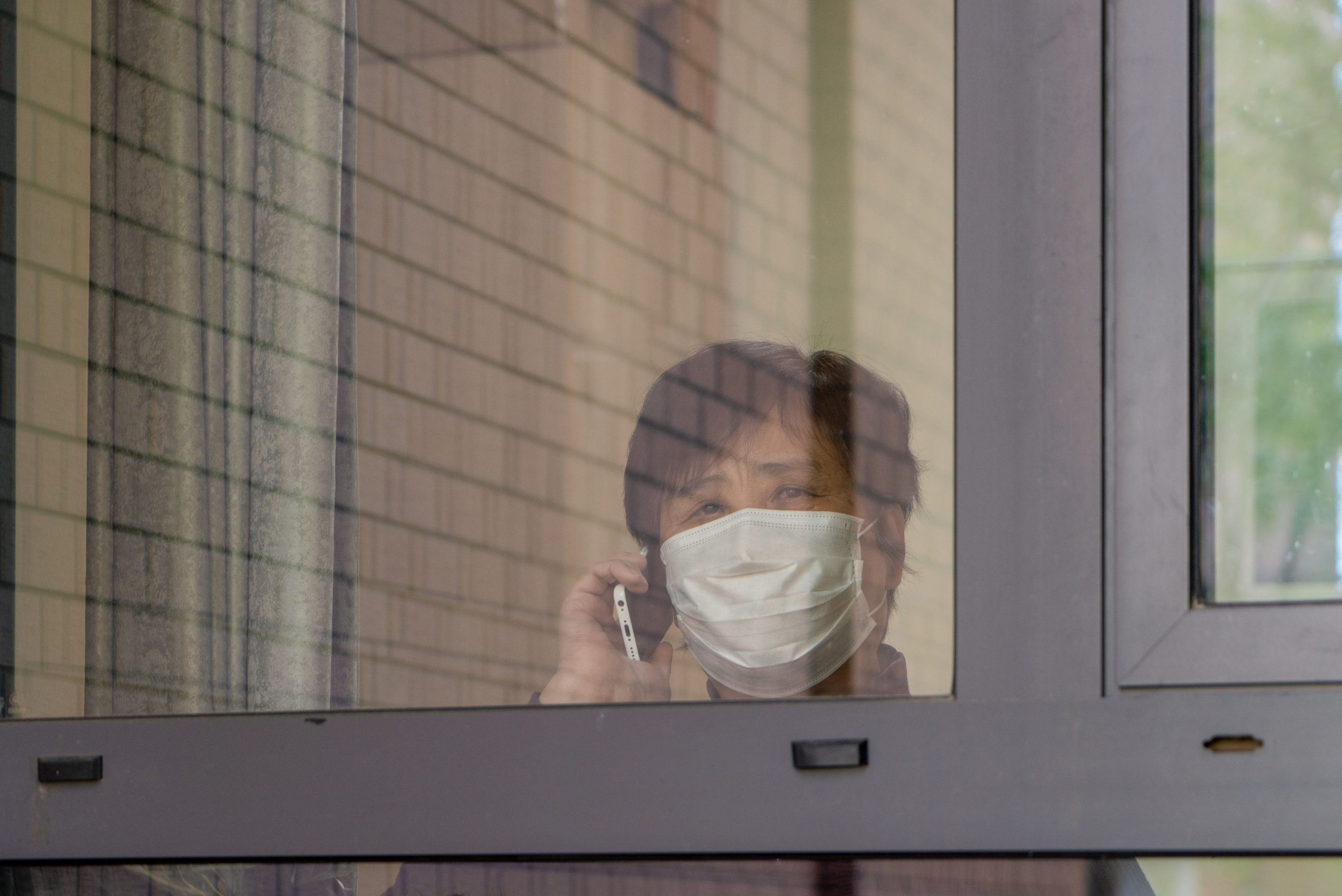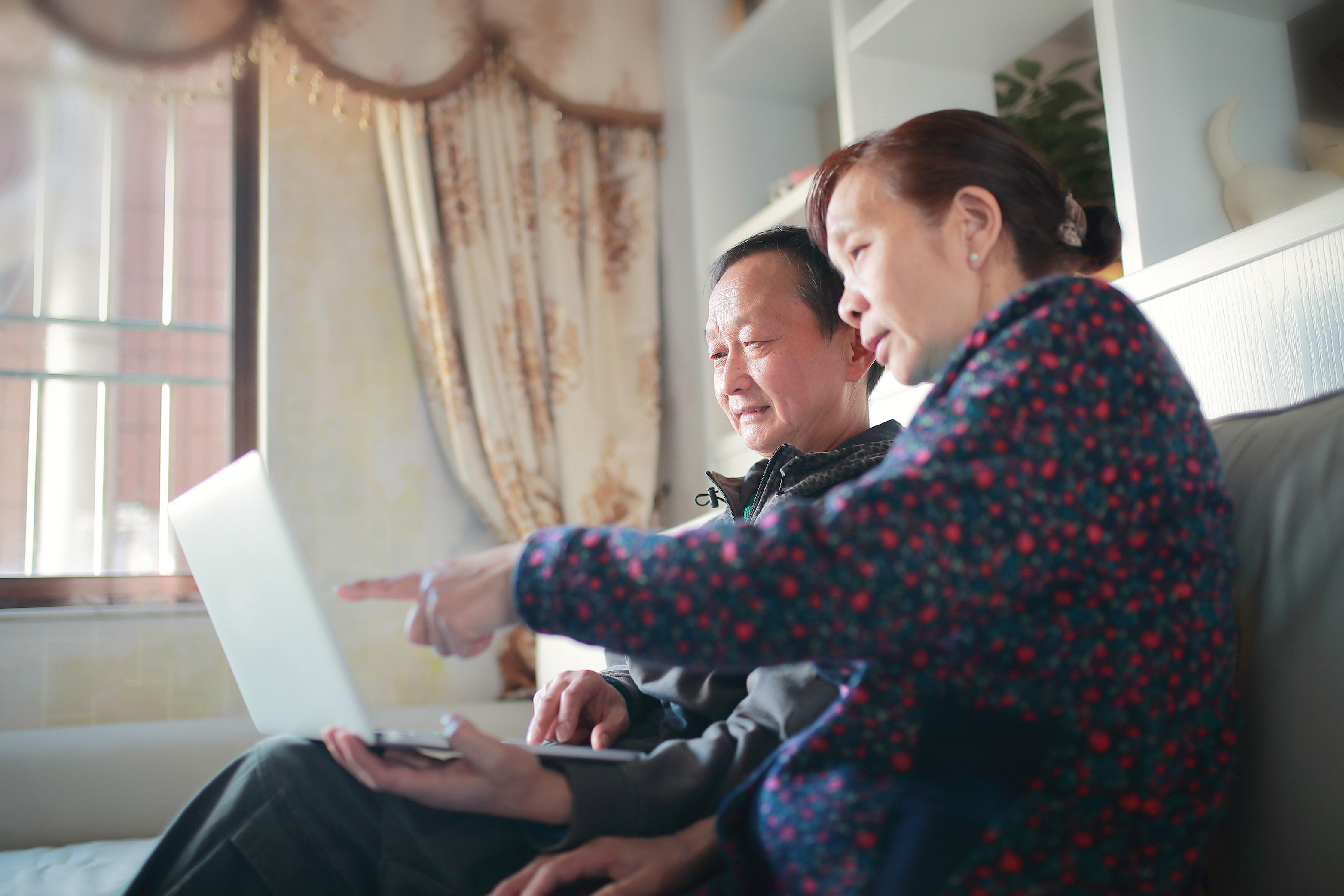
Communicating COVID-19 to our older culturally diverse Australians

COVID-19 lockdowns forced us online, but that’s been a mixed experience for older Chinese Australians – especially when it comes to getting accurate vaccine information
Published 9 September 2021
It was during Melbourne’s second lockdown in 2020, after having breakfast and getting some house work done, that Sheng – who’s in her 60s and originally from mainland China – logged into her online conference to get ready for her English class.
The session was organised by the local senior Chinese association and it turned out it was just the beginning of her busy lockdown life.

The English class was followed by a packed schedule of singing, gardening and catching up with other members in the association in the afternoon.
The senior association Sheng joined fully utilised the flexibility of the online conferencing tool Zoom in organising social activities from yoga classes, to dancing and to herbal health seminars.
“Life became busier during the lockdown”, Sheng says, “I didn’t expect this, just unbelievable”.

But life was much quieter during the lockdown for Chui, in her 70s and from Hong Kong, who also joined a local senior Chinese association.
Her association didn’t manage to ‘go online’. Chui lost contact with most her friends as they had relied on face-to-face meeting and didn’t consider technology to maintain connection.
There were no Zooms or any online social sessions for people to join, let alone any community building activities. Chui used digital apps like WhatsApp and WeChat, but she wasn’t able to utilise these platforms to participate in any social activities.
“We needed someone who could help us with the technology”, Chui says.
In the meantime, both women were waiting for the lockdown to end so they could meet up again in person, despite the threat COVID-19 posed to the older population.

Our study highlights the uneven and contrasting digital experience among older Chinese Australians during COVID-19 – some were engaged and active online, while others were left isolated.
Our team collaborated with a Chinese community health organisation and several senior Chinese associations across Melbourne to conduct 15 in-depth interviews (via Zoom or phone).
These conversations were with older Chinese Australians from mainland China, Hong Kong and Malaysia and aimed to learn about their habits and experience with digital media use before and during lockdown.

Arts & Culture
When trust matters more than translation
We talked to community workers (both paid and volunteers) about their experience in engaging older members of the Chinese communities via digital media during the lockdown.
Our team also took part in the online community, participating in 10 online English classes and 10 social gathering sessions organised by the Chinese health organisation, to look at their strengths and limitations. We also looked at the opportunities and issues of providing digital media services to older Chinese Australians.
The layers of digital literacy
While there has been consistent calls to improve the digital literacy of older Australians, their confidence with technology, and the initiatives to improve their digital skills, our findings suggest that a more sophisticated rethinking about the way we approach integrating digital technologies in older Australians’ lives is needed.

First and foremost, the older Chinese who participated in our study weren’t that ‘illiterate’ when it came to digital technologies.
Not only did all research participants use WhatsApp and/or WeChat, but they also showed great interest and ability in learning new technologies, which is consistent with previous research.
Community workers (both paid and volunteered) played a vital role in helping older people learn to use Zoom, mostly using traditional modes of communication, like a phone call, to teach older Chinese in using Zoom.

Sciences & Technology
Paternalism, public housing and COVID-19
For those who struggled with instructions over the phone, the coaching was moved to face-to-face, but with careful health measures.
One participant, Yung – who’s in her 70s and from Malaysia – told us that her local Chinese church sent a volunteer to teach her using Zoom through a window. The volunteer stood outside the house, watching Yung learn Zoom and providing advice where it was needed.
However, not every community association had people to help – as we heard in Chui’s case.
Many community workers told us that they had really shouldered the responsibility of incorporating digital media to help maintain service and connections for their members. But not every community worker was up to the task, lacking the relevant training and technical knowledge to help others.
We need community-based digital facilitators
Unlike the conventional wisdom that as long as people have access to technologies and possess digital literacy they will benefit, we believe the story is more complicated.

Although older Chinese Australians in our study all had access to the relevant technologies and possessed adequate digital skills in using them for everyday communications and information search, they might not always benefit from digital media’s social, cultural and community-building potential.
This is obvious through Sheng and Chui’s contrasting experience during lockdown. Despite the fact that they both used social media, had a smartphone and the potential to learn new technologies, Sheng had a ‘facilitator’ from her association while Chui didn’t.
We need more well-trained digital facilitator and have them to support older Australians to navigate different digital media.

Politics & Society
How can we open up Melbourne while tackling disadvantage?
This is a co-working and collaborative approach between older users and digitally savvy and well-trained community members, to create community benefits particularly during a time of crisis and uncertainty.
This co-working approach is particularly useful to engage older Australians from CALD backgrounds, whose media culture and habit might be unique to their cultural needs and expectations.
Previous studies have shown how older people are actively seeking digital help from family members, professionals (like telecommunication stores), and friends.
Other research also shows that older Chinese tend to trust their peers and community leaders on making important decisions. And at the moment, the urgency of the COVID-19 vaccine rollout means getting vaccinated is one of those decisions.

Communicating about the covid-19 vaccines
We recently spoke again with Jane – who’s in her 40s, from Hong Kong. She is one of the social workers we originally interviewed. This time we asked her about older Chinese Australians’ attitude towards COVID-19 vaccine.
Jane told us that many older Chinese she had worked with tend to ‘go with their peers’ when it comes to a decision on vaccination.
But she has also organised online information sessions on the vaccine to address some misinformation and hesitancy among older Chinese Australians in her organisation. As a result, some became ‘less concerned’ about vaccination.

Health & Medicine
The young Australians hit hard during COVID-19
This is just a single example – to be more effective, we need a more systematic approach to fulfil older Australians’ digital needs.
Australia’s population is ageing, at the same time the older generation is becoming more culturally and linguistically diverse.
But with the looming prospect of lockdown becoming a part of our COVID-normal for the foreseeable future, our preliminary findings call for more appropriate and strategic approach to supporting the policy ambition of using digital technologies to advance Australia’s aged care services.
It’s worth devoting more resources, training and support to community workers and volunteers who work in the aged care and social services (including those in multicultural affairs) to improve their digital literacy and build up their capacity to help older Australians with digital technologies.
This kind of community approach could drive both policy and development in helping older Australians to make meaningful connections to their communities and provide crucial information – especially during COVID-19 lockdowns and vaccine rollouts – through a co-working approach using digital technologies.
Banner: Getty Images

